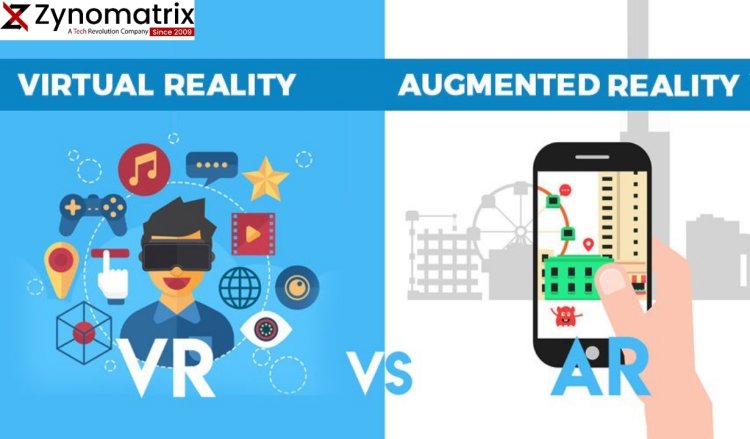Virtual Reality vs. Augmented Reality: Which Immersive Tech Takes the Lead?
Virtual Reality, often referred to as VR, is a technology that transports users into entirely digital environments. By wearing a VR headset, users are immersed in a three-dimensional world where they can interact with objects, spaces, and even other users. The experience is so immersive that users often feel like they've been transported to an entirely different place.

Introduction
In the world of technology, two immersive experiences have been steadily gaining momentum: Virtual Reality (VR) and Augmented Reality (AR). These groundbreaking technologies have the power to reshape how we interact with digital content and our environment. In this article, we'll dive into the realms of VR and AR, exploring their differences, applications, and the ongoing debate about which one might ultimately take the lead.
Exploring Augmented Reality
On the other hand, Augmented Reality (AR) enhances the real world by overlaying digital information, such as images, videos, or data, onto a user's view of the physical environment. This is typically achieved through smartphones, smart glasses, or other wearable devices. Unlike VR, which creates a separate world, AR enhances our current reality by adding digital layers.
Use Cases: Virtual Reality
Virtual Reality has found a multitude of applications across various industries. In gaming, VR offers unparalleled immersion, placing players at the center of their favorite virtual worlds. Educational institutions are using VR to provide hands-on experiences in subjects like history, science, and geography. Healthcare professionals utilize VR simulations for training and even pain management during medical procedures. Architects and designers can create virtual walkthroughs of their projects, giving clients a realistic feel for the final result.
Use Cases: Augmented Reality
Augmented Reality's real-world integration is revolutionizing industries as well. In marketing, AR campaigns engage customers with interactive experiences, blurring the lines between physical and digital advertising. Retailers are using AR to allow customers to "try on" products virtually before making a purchase. Education is being transformed with AR-enabled textbooks and learning tools that bring static concepts to life. Even industrial maintenance and repair benefit from AR overlays that provide step-by-step instructions.
Advantages and Limitations: Virtual Reality
The key strength of VR lies in its ability to provide complete immersion. Whether you're exploring a fantasy world or undergoing specialized training, VR's capacity to transport users is unmatched. However, this level of immersion comes with downsides. Users can experience motion sickness, and the need for dedicated, sometimes expensive hardware can be a barrier for entry.
Advantages and Limitations: Augmented Reality
Augmented Reality excels in seamlessly blending digital elements with the real world. This opens up social interaction and doesn't isolate users in the same way as VR. It also tends to be more accessible, as AR experiences can often be accessed through smartphones. However, AR's limitations include a limited field of view and the challenge of integrating digital objects convincingly.
Future Prospects
Both VR and AR are poised for exciting growth. As 5G networks become more widespread, the data-intensive demands of VR and AR will be better met, leading to more seamless experiences. Advancements in hardware and software will likely lead to more affordable and user-friendly devices.
Consumer Adoption and Industry Trends
Consumer adoption of VR and AR has been steadily increasing, but AR, with its lower entry barrier, has seen a more rapid integration into everyday life. In terms of industry trends, big players like Facebook (which owns Oculus), Microsoft (with HoloLens), and Apple are investing heavily in both VR and AR, suggesting that the technologies are here to stay.
What's Your Reaction?





















